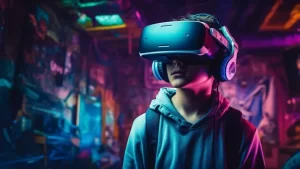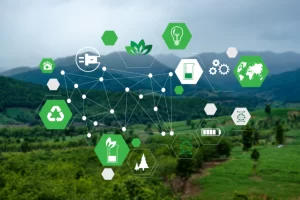The Future of E-Commerce

The future of e-commerce is exciting and full of tremendous changes. This industry is evolving at an astounding rate to meet the demands of customers around the globe.
Despite the closures of stores during COVID-19, global e-commerce sales are expected to expand in 2023. It’s an industry that plays a significant role in the economy and provides businesses with plenty of opportunities.
Artificial Intelligence
Artificial intelligence (AI) is being increasingly applied to enhance customer service, automate sales processes and boost revenue. eCommerce businesses benefit from this advancement as it helps them identify prospective customers, communicate with them via chatbots and simplify sales transactions.
According to a recent study by Business Insider, up to 85% of customer interactions will be handled without human involvement by 2020. With AI helping companies respond rapidly and efficiently, this prediction appears very plausible.
One of the primary uses for AI in e-commerce is to offer better recommendations. By analyzing data on past purchasing behavior, lookalike customers, and other factors, AI can suggest products tailored to each user’s preferences.
Furthermore, AI can assist e-commerce companies in anticipating customer demand and optimizing logistics by routing packages accordingly. Amazon, for example, uses AI to power its personalised recommendations engine that drives 35% of annual sales – an effective practice.
Visual Stimuli
Visual stimuli are one of the most influential tools marketers use to showcase products and services. These may include photographs, videos, concept maps, graphs and charts, etc.
The human brain processes a great deal of information from its environment through vision, but its cognitive capacity is limited and cannot process everything it perceives. Thus, it attempts to organize files by categorising them based on simple characteristics like size.
Khvostov and his team recently tested whether this compression of information could be used to categorize objects as well. They observed 700 visual stimuli that included a fixed combination of line length and orientation (for instance, long ones were steep, while short ones flat).
In 10% of cases, the combinations were the opposite: long lines became steep and short ones flat – debunking the popular belief that objects are categorised based on one feature such as size. Furthermore, this type of visual mismatch negativity was associated with significant activation in both ventral and dorsal visual pathways.
Automated Freight Vehicles
E-commerce is growing, which means more goods need to be transported. Automated freight vehicles are an integral part of the solution.
At present, autonomous trucks can be tested on eighteen states’ public roads without a driver. These trial runs may include navigating traffic lights and city traffic as well as driving on the highway.
Although these trials are a step in the right direction, they remain far from full autonomy. Additionally, several factors need to be resolved before these initiatives can become widely popularized, such as infrastructure.
Multichannel Experience
Today’s consumers desire the convenience of shopping online, yet still desire a visual, emotional and physical experience they get by shopping in a retail store. By connecting these channels together, retailers can increase customer convenience, boost brand reach and ensure messaging consistency across all touchpoints.
Omnichannel e-commerce involves data being integrated from different marketing activation teams and made accessible to customers so they can receive tailored content. This enables businesses to craft more comprehensive strategies, boost sales volumes and boost brand loyalty.
Organizations need the appropriate infrastructure and tech stack, a compelling vision and skilled personnel to execute. Omnichannel may be more expensive than multichannel but its benefits include increased revenue and customer retention due to greater engagement levels.
CVS, for instance, strives to replicate the in-store pharmacy experience online and through mobile applications by offering customers a way to check prescriptions, register for COVID-19 services, and take care of other shopping needs. By connecting digital channels with physical customer engagement points, CVS increases brand reach, ensures consistency in its messaging, and provides greater convenience for their customers.


